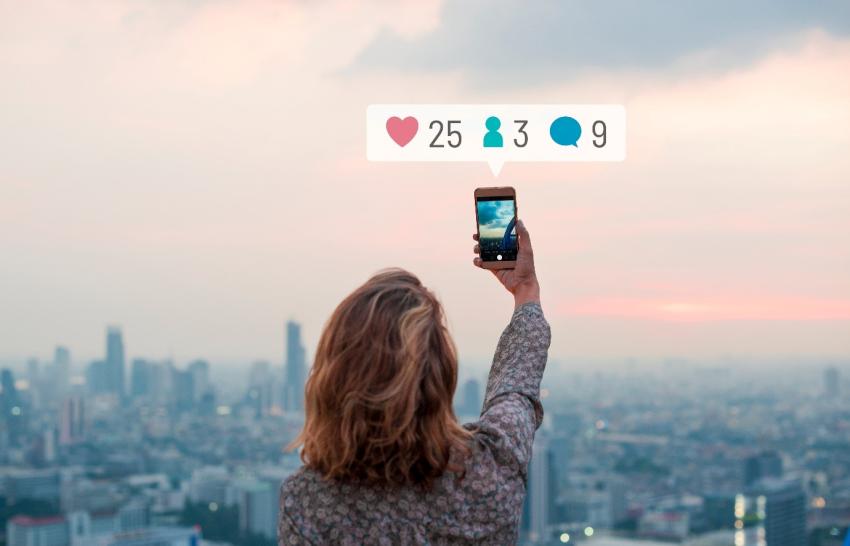Social media translation: Why is it so important?

You are probably wondering: What exactly is social media translation and why is it so important?
With time and the technological progress, social networks have evolved into an important business tool for social media campaigns. They can be seen as virtual shop windows, which are not only used for advertising. No. They have revolutionised the way a brand communicates with consumers and potential customers.
Índice de contenidos
Index of contents
Index du contenu
Inhaltsverzeichnis
Indice dei contenuti
- Online presence of businesses
- Multilingual digital marketing: It is not only about translation
- The secret to success: highest quality in writing and translating social media content
- Characteristics of social media translation
- Quality standard
- Tips for social media translation
- So why is social media translation important?
1. Online presence of businesses

Currently, it is estimated that 90 % of large companies and up to 50 % of small and medium-sized businesses are present on the internet. There has also been an increase in e-commerce, especially in the last year.
There are millions of active users on different platforms. This makes it easier than ever for small and medium-sized businesses to run international marketing campaigns with smaller budgets.
In these cases, it is more difficult to provide high-quality content for the target language and culture. Don't forget that content translation, applied to a digital marketing strategy, involves an important transcreation component.
There are country-specific differences, for which proficient cultural knowledge is required. Translation errors for brand names or the products are possible if you do not use professional translation services.
A good example is Mercedes-Benz. With a shorter name, the car manufacturer wanted to establish itself in the Chinese market. It was to be "Bensi", short and simple. Unfortunately, they were not aware that it means something like "haste to die" in Chinese.
Therefore, it is important to hire a professional translation agency to ensure a successful campaign.
2. Multilingual digital marketing: It is not only about translation

The online world is characterised by immediacy and the large amount of content that is uploaded every minute. With this amount of content, new posts will probably be forgotten or overseen. At the latest, as soon as the user scrolls down on their home screen and discovers new posts.
The internet does not forget and users can easily find old articles by simply using the search engines.
We have already mentioned in this blog how important SEO translation (Search Engine Optimisation) is. It is important to optimise multilingual content properly. We also talked about how to promote web content to improve your Google ranking.
Keywords enable users to find old content, whenever it’s relevant.
A bad or poor translation can seriously affect the brand’s image.
3. The secret to success: highest quality in writing and translating social media content

As I mentioned earlier, social networks do not only serve as a shop window for companies to showcase their products. Social media has created a new medium to communicate with customers.
Thanks to the networks’ immediacy, it is now possible to have a real-time conversation with consumers. It also makes it easier for companies to understand and meet the needs of their customers.
However, there is also a drawback. It is the sheer amount of content available for users
on a daily basis. This makes it very difficult to stand out among all this information.
Therefore, it is important to make an effort to create high-quality content. This includes all languages and cultures, which you want to use for your digital marketing. Therefore, translation is an inevitable part of your international content marketing campaign.
If you want to translate website content for Facebook, Instagram, Twitter or similar, hire a native translator. The translator should also be specialised in marketing translations.
Why? I'll tell you about that in the following.
4. Characteristics of social media translation

Each translation field presents specific characteristics that distinguishes it from other types of translation. Translating social media content is no different.
4.1 Many social media channels and all are different
Each social network is a world of its own, with its own rules and communication channels.
Instagram, for example, is a social network based mainly on images and videos. The text is somewhat supplementary and often embedded in pictures. Twitter, on the other hand, offers you a 280-character limit that you must adhere to.
It is important to find a professional translator who is familiar with the specific features of each social network.
4.2 Connection with the users
As I said, every social network is different. It is important that we learn to adapt our content translation to the format of each social network. Our content should create a bond with the user to catch their attention. This then turns into Likes, RTs, comments, etc.
The interaction allows a company to get insights into what internet users think about them.
4.3 Quality standard
Users are actually very critical of the content that companies upload. A Facebook post with grammatical errors or a tweet with spelling mistakes can seriously damage the brand’s image.
In the same way, content with inappropriate language can become a meme. For example, if the colloquial language does not fit the time or region.
4.4 Immediacy
Communication in social media takes place in real time. Therefore, translation must also be done in real time.
It is always better to plan publications weeks in advance. This way you can ensure that all content has been professionally translated into all languages.
4.5 Adjust the tone
As I mentioned earlier, each social network has a different communication code and format. Therefore, you need to adapt the content to the code and format of the respective social network.
A post for Twitter must be concise and direct. It is not the same as a post for Facebook, which can be longer and more complete.
Also, the linguistic register must also be adapted and one should never use the same register for two differet target groups (e.g. an informative blog or a blog for professionals).
4.6 Social media can also backfire
Social networks have a wide reach. Not maintaining correctly the brand’s image, can lead to mistrust and a bad reputation. A situation which is difficult to reverse once it has grown popular among users.
That’s why, special attention must be paid to content writing and translation. Content must be created professionally, as the reputation of an entire brand depends on it.
5. Tips for social media translation

I am a translator specialised in SEO translation and digital marketing translation. That's why I've summarised some basic tips for managing social media translation for you.
- Planning. Doing things on the fly, rarely turns out well. My recommendation is to create a publishing calendar to manage publications and organise content translations.
- Automate processes. There are numerous programmes to automate posting on different social networks at the same time. This saves a lot of time and also allows content to be published on all profiles at the same time.
- That’s how you can achieve a consistent campaign. It also allows better control of the content and reduce the likelihood of errors.
- One account for each language. Sharing the same post in different languages using the same account might confuse users. It is best to divide your target groups by language.
- Trust a specialised translator or work with a professional translation agency. As already mentioned, there are a number of special characteristics in social media translation. The translator must know and master these in order to achieve an optimal result. Trust a professional who is specialised in digital marketing and who knows the target market.
- Let the translator work autonomously. It is in the nature of any social network that a literal translation is not the best option. Sometimes it will be necessary to adapt the content to the target culture. In other cases, it is necessary to adapt them to the format of the respective platform.
- Keywords are important. To optimise content correctly, it is necessary to use the best keywords. They are important to reach the right target group, so that your efforts are not in vain.
- Don't forget to translate the links. Make sure your social media content is available in the language of the target country. There is no point in presenting users content that they do not understand! (Page, product, blog post, video, infographic, app)
6. So why is social media translation important?

I hope this article has answered our initial question: Why is social media translation so important?
A good translation will help your company build a positive and strong brand image with your new target audience.
Misuse of machine translation without revision can have negative consequences for a company's reputation.



Add new comment